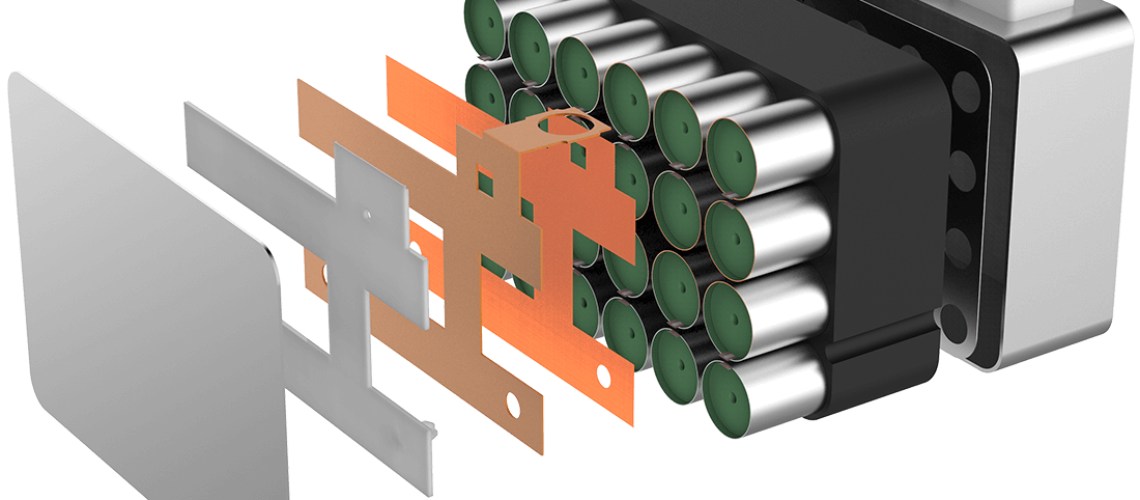Cadenza’s supercell is produced with funding assistance from the New York State Energy Research and Development Authority. The battery technology prevents a ‘thermal runaway,’ or an incident creating overheating or fire when a singular cell consumes the whole battery.
A first-of-its-kind energy storage system using that provides cellular isolation in lithium-ion batteries has been opened at a New York municipal power authority’s office. This week the New York Power Authority unveiled a 50 kW / 250 kWh demonstration system at its White Plains, N.Y. offices, that uses a cell-isolating technology from Cadenza Innovation, a Danbury, Conn.-based startup company.
The New York project is demonstrating a peak energy demand shaving function that reduces the peak electricity load in commercial buildings. The pilot project will also help advance New York State’s nation-leading climate and clean energy goals, including Governor Kathy Hochul’s recently announced plans for a framework to achieve 6 GW of energy storage resources by 2030. (link)
Following an April 2019 battery fire at Arizona Public Service’s McMicken site in Surprise, Ariz., states including New York have adopted stringent requirements for lithium-ion battery installations.
Cadenza’s supercell is produced with funding assistance from the New York State Energy Research and Development Authority and is designed with fire safety in mind. The battery technology prevents a ‘thermal runaway,’ meaning a malfunction in the cell is isolated to that one cell and is not expected to propagate into surrounding cells that make up the battery in the event of overheating or fire. The supercell’s safety feature enables energy storage systems to be installed into more densely populated urban areas.
Deployed adjacent to NYPA’s White Plains offices and funded in part with a $1 million award through NYSERDA’s Innovation program, the Cadenza battery system was developed in collaboration with Hitachi Energy to highlight the role of energy storage in enhancing demand management and grid flexibility. The battery project is projected to serve as a model for integrating low-cost, high-performance and thermally safe renewable energy resources into the grid.
“This initial testing phase shows the potential for this type of battery energy storage system to serve as a model for managing energy demands and lowering costs for owners of commercial and industrial buildings,” said NYPA president and chief executive officer Justin Driscoll. “The unit is reducing peak loads at the Power Authority’s main offices, smoothing electricity network operations and showing a safety advantage by demonstrating a reduction in the potential of thermal runaway.
Cadenza’s battery is U.S. Department of Defense tested UL compliant. The superCell’s design bolsters grid resilience and powers a range of uses in the commercial and industrial market. By packaging components to lower costs and increase safety, the battery is designed to reduce the need for additional fire safety protection and mitigation systems, resulting in improved energy density and advanced lithium-ion systems.
Under New York’s Climate Leadership and Community Protection Act (CLCPA), the state has pledged to generate 70% of its power resources from renewable energy by 2030 and become net zero by 2040. Governor Hochul recently proposed expanding New York State’s energy storage programs to double the goal to 6 GW by 2030, which represents at least 20% of the state’s peak electricity load.
BloombergNEF (BNEF) has forecast the global energy storage market to increase 15-fold by 2030 and “expects batteries to dominate the market at least until the 2030s, in large part due to their price competitiveness, established supply chain and significant track record.” Bloomberg NEF’s Helen Kou recently told pv magazine USA that 54 GW of Inflation Reduction Act-driven storage will lift the U.S. to 112 GW/396 GWh this decade. BNEF’s post-IRA forecast includes 2.5 GW of added storage capacity in New York through 2030 that would have not been added without IRA incentives such as the standalone storage ITC credit.
Founded in 2012, Cadenza Innovation has raised $15.5 million in growth funding to date from investors that include Turtle & Hughes, an electrical contractor, the U.S. Department of Energy, Kestrel Holdings, Golden Seeds, Toba Group and private investors.



